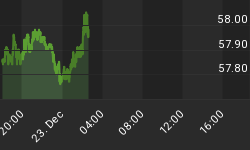With the US dollar falling down a precipice, spare a thought for non-US investors invested in US stocks and bonds.
The graph below shows the performance of the S&P 500 Index since the beginning of 2007 in both US dollar terms (red line) and euro terms (blue line). Whereas US investors are showing a very poor return of -8.03% for the period, euro investors are completely under water to the tune of -21.02%. For the year to date the figures are -11.78% (US dollar) and -15.50% (euro). (Although I am using the euro in this example, the same logic applies to most other non-US dollar currencies.)

Source: StockCharts.com
The next graph illustrates the same principle for bonds by comparing the performance of US 10-year Treasury Notes in US dollar terms (red line) with the same bonds from the viewpoint of a European investor (blue line). Whereas US investors have every reason to be relatively pleased with a return of +10.28%, euro investors are in the red by -5.28%. For the year to date the figures are +4.98% (US dollar) and +0.55% (euro).

Source: StockCharts.com
With the falling dollar the US is becoming like a candy store for foreign investors, but that does not mean that the focus will necessarily be on run-of- the-mill portfolio investments in US stocks and bonds as a case can be made that neither asset class offers particularly appealing value. As a matter of fact, any sell-off in the US markets could result in large-scale foreign liquidations. Capitalizing on the favorable exchange rate, foreign investments may for a while be directed more towards picking out the gems by means of corporate deals. That certainly seems to be the emphasis of the Sovereign Wealth Funds.
















